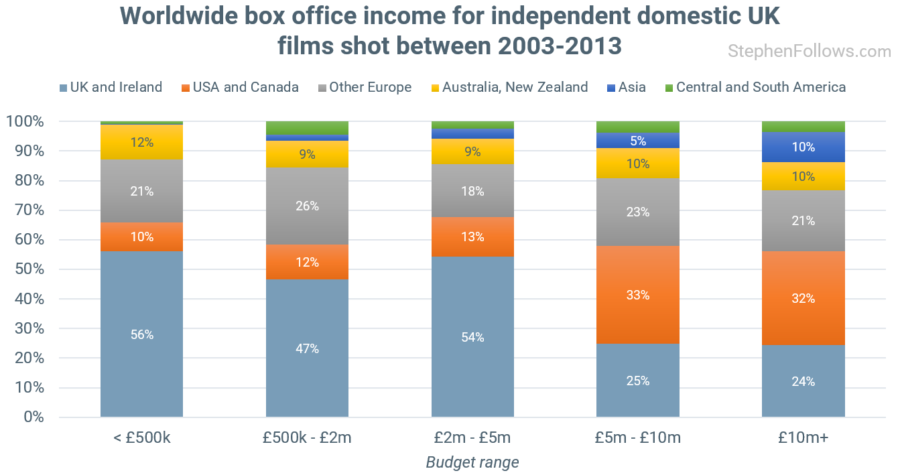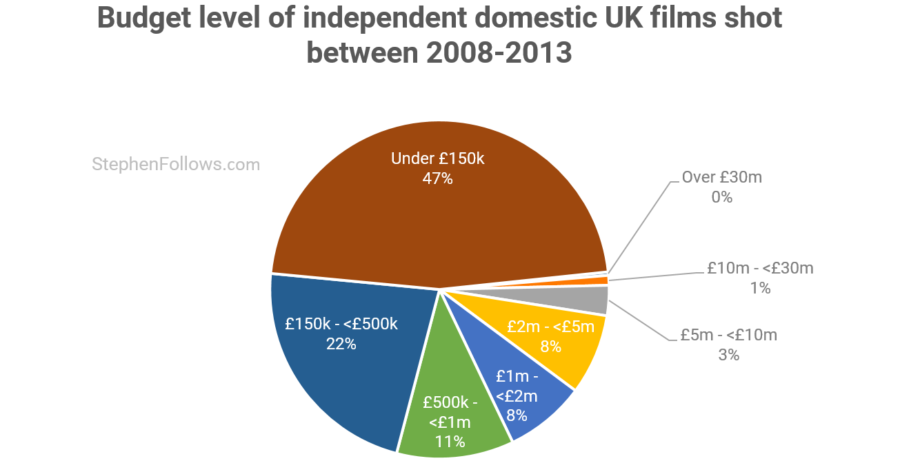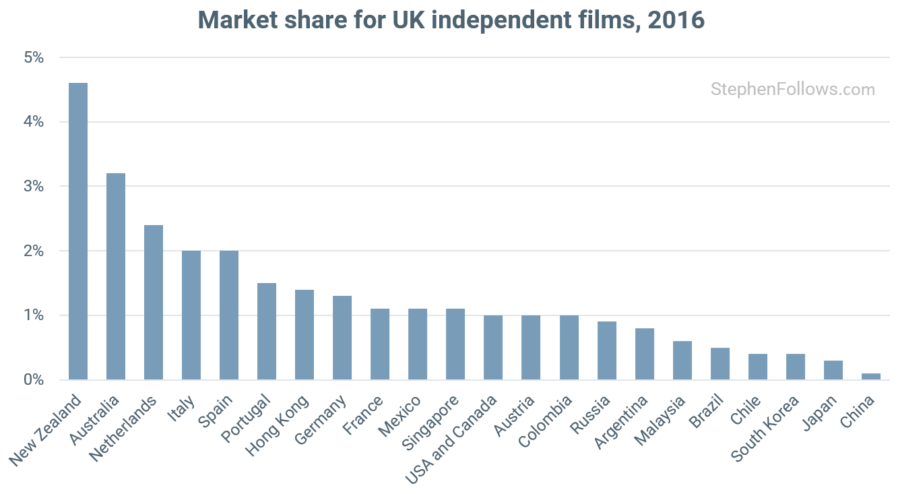 Last month, I gave my annual lecture at the National Film and Television School (NFTS), looking at the business side of the UK film industry. It’s an enjoyable lecture to give, in part because the audience is made up from across all the disciplines (so animators, cinematographers, directors, producers, production managers, etc). This mix often results in a wide variety of questions and this time there was a question I promised to explore further in a blog article.
Last month, I gave my annual lecture at the National Film and Television School (NFTS), looking at the business side of the UK film industry. It’s an enjoyable lecture to give, in part because the audience is made up from across all the disciplines (so animators, cinematographers, directors, producers, production managers, etc). This mix often results in a wide variety of questions and this time there was a question I promised to explore further in a blog article.
The query was sparked by a section of my talk which showed that the majority of the box office income collected by most British films is collected in the UK. This surprised some attendees as the film industry is normally viewed by professionals as a global marketplace with plenty opportunities for foreign films to cross borders and earn money worldwide. The UK is just one country* and so, the question went, surely the UK income represents a small percentage of total earned by UK films? Today I will answer this question.
*Note: Film industry figures for the UK are typically for the UK and the Republic of Ireland as the two countries are treated as one territory.
Where in the world do British films earn money?
Below is the chart which raised the question. It’s a BFI analysis of ComScore data which shows where UK domestic independent films earn their box office income around the world. The majority of films budgeted under £5 million earned over half of their global box office income from the UK.

At this point, it would be useful for us to consider how many films fall into the ‘sub-£5m’ range. Well, almost all! I don’t have an annual breakdown of the data above but I was able to re-create the dataset for the final six years of the period (i.e. films shot in the UK 2008-13). Between 2008 and 2013, 95.8% of British independent films shot in the UK cost under £5 million.

How much of the global box office goes to UK films?
So far we have been focusing on independent UK films (i.e. those without the backing of a US studio). In 2016, these films collected just 1.2% of the global cinema box office (down from a high of 3.2% in 2014).
However, we have to remember that the UK film industry is not one thing but a tale of two worlds – the independents and the studio-backed productions. Due to the recent boom in studio-backed productions filming in the UK (see more about this here) it is not surprising that more of the global box office has been going to these mega “British” productions. Last year, 15.2% of global theatrical revenues went to films backed by US studios but shot in the UK.

Which countries are fans of UK independent films?
UK independent films are very popular in New Zealand, capturing almost 5% of the country’s box office income in 2016. On the flip side, British indie films perform badly in many Asian countries, including China, Japan and South Korea.

So what types of British films do travel well?
Let’s end our journey on a positive note by looking at which types of independent British films travel well. In 2016, the best performing independent British films included The Danish Girl, Florence Foster Jenkins, Eddie the Eagle and Absolutely Fabulous: The Movie. But are there any wider trends producers can take note of?
In 2012, David Steele authored a paper entitled ‘International Territory Review‘ which looked at the global market for UK films. Among his fascinating findings was a pattern to the types of British films that perform well outside the UK. He noted that these films tended to fall into one of four types:
- Biopics of significant British historical figures of international interest (The King’s Speech, The Iron Lady)
- Medium budget British comedies with star actors (Johnny English, Nanny McPhee, Paul)
- British films with a particular cultural or national connection to the territory in question (Senna, Jean Charles)
- British films with story / content of universal appeal (Slumdog Millionaire, One Life)

Notes
Today’s data came from the BFI, ComScore, David Steele and Olsberg SPI. The ‘worldwide’ data in the first chart is calculated using data from 24 major international markets, as there are a number of smaller markets where reliable data is not available. It’s worth noting that this article only looks at the international and UK theatrical markets, and films will earn money in many other arenas (such as DVD, TV, VOD, etc). You can read more about that in a few of my past articles here, here and here.
Epilogue
Articles like this one today would not be possible without the hard work of the BFI’s Research and Statistics Unit. Their work and publications mean that we as British filmmakers probably have more information about our home industry than any other nation of filmmakers.





Comments
I think it’s interesting to look at the Lumiere Database showing admissions for films across the EU (from around 2000 for reliable figures). Looking at individual directors, some fare better in certain European markets than they do at home. The most obvious example is Ken Loach, whose films always sell best in France. But it’s also true for some films by Danny Boyle, Andrea Arnold, Mike Leigh, Stephen Frears etc. In addition to the four categories you mention, I think the other two factors are 1) close arrangements with distributors in different European countries (especially if they have an investment in the film – co-productions are falling in number and Brexit won’t help) and 2) the director’s profile developed via Cannes, Venice or Berlin.
The poor response to British independents in Asia (you don’t even mention India) is sad, but I don’t think we try hard enough (and of course it would require more funding). I think the French manage to export to South Korea – UniFrance has an office in Seoul.
Hey Roy
Good point. Also, European distribution is bolstered by distribution support which, as you say, is at risk post-Brexit.
I didn’t mention India as I don’t have reliable figures for box office income. This is a common problem when looking at international distribution data, which is why India is often left off territory analysis.
I’m actually working on a Lumiere-based article, hopefully for next week, so I may return to this point then.
Hi Roy (long time no see!),
The development of large, young cinephile audiences in South Korea must represent an opportunity for exports of British independent cinema, and one which France has been quite effective in capitalising on as you say.
Japan, is a far less dynamic market than it was when I lived there (2000-2003), there seems to be very little going on there to maintain or develop cinema audiences for a wider range of films.
So I think the not trying hard enough is reciprocal to some degree.
Tom
Very interesting reading, thank you
Great Post ! I have read your other posts which are really informative for UK film industry. Thanks